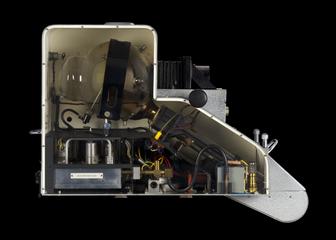
Cut-away Emitron television camera
1936-1950

Television camera (incorporating an Emitron camera tube, received from EMI Research Labs Ltd.) and stand, first used at Alexandra Palace in 1936. Special demonstration model cut-away television camera incorporating an Emitron pick-up tube, with pedestal, received in 1955 from EMI [Electric and Musical Industries Ltd.] by the Science Museum.
Demonstration model cut-away Marconi-EMI Emitron television camera, made by Marconi-EMI between 1933 and 1941.
Emitron cameras were developed in the UK from 1933. After two years of rapid development, EMI committed to a 405-line resolution television standard. At this time, EMI's competitor RCA was still producing images with only 343-lines of horizontal picture resolution.
EMI with its 405-line Emitron cameras won the competition to provide the BBC’s first regular high-definition television service at Alexandra Palace, which broadcast from 1936 to 1939, and was re-activated in June 1946. Shortages of money and resources in the post-war period meant that the Emitron cameras originally supplied to the BBC in 1936 remained in regular use well into the 1950s.